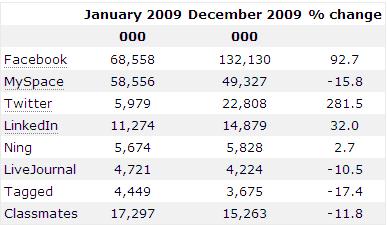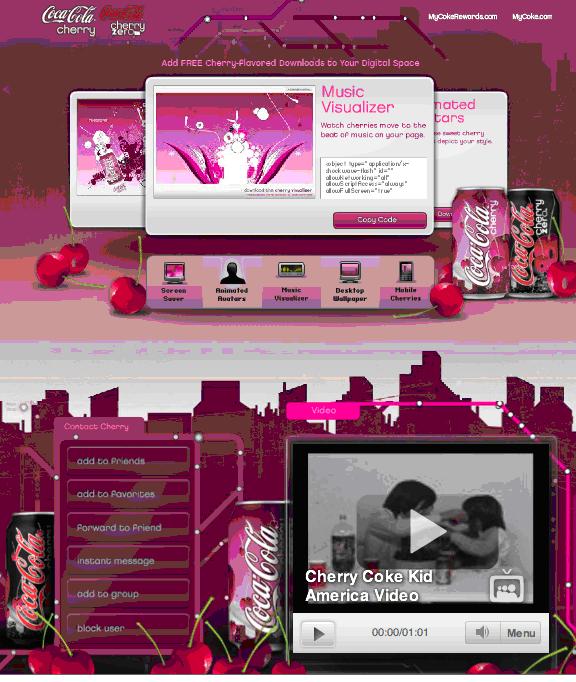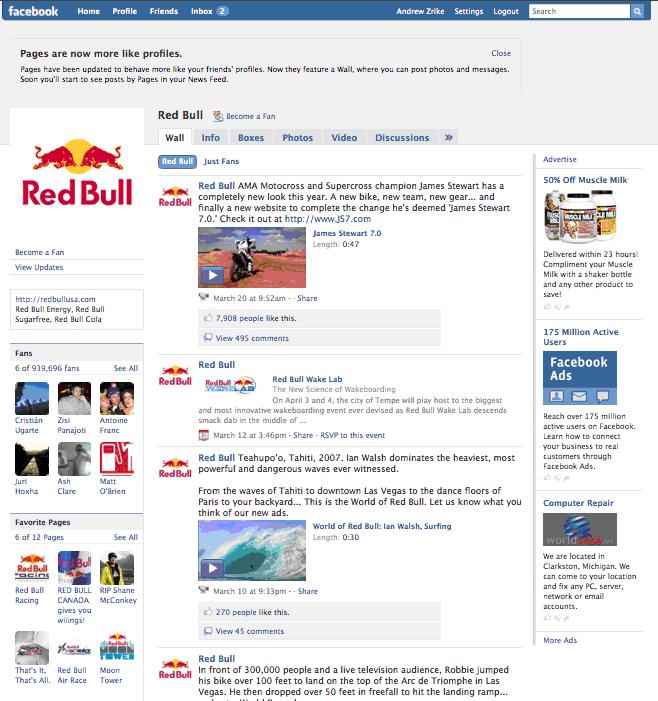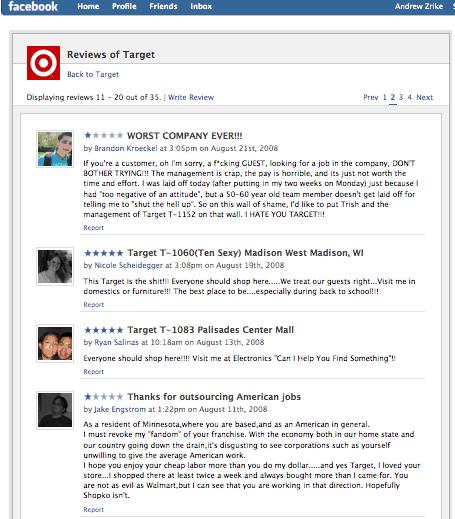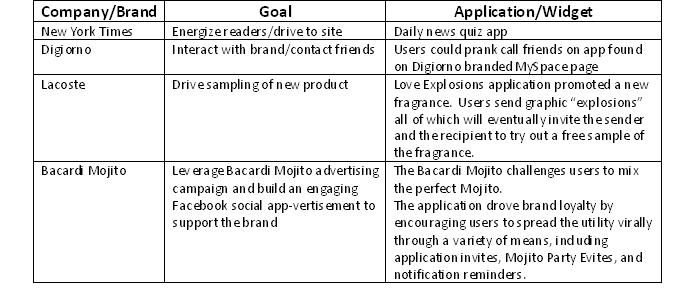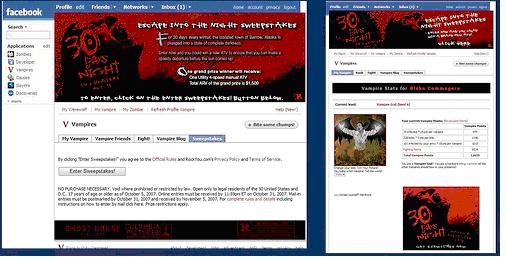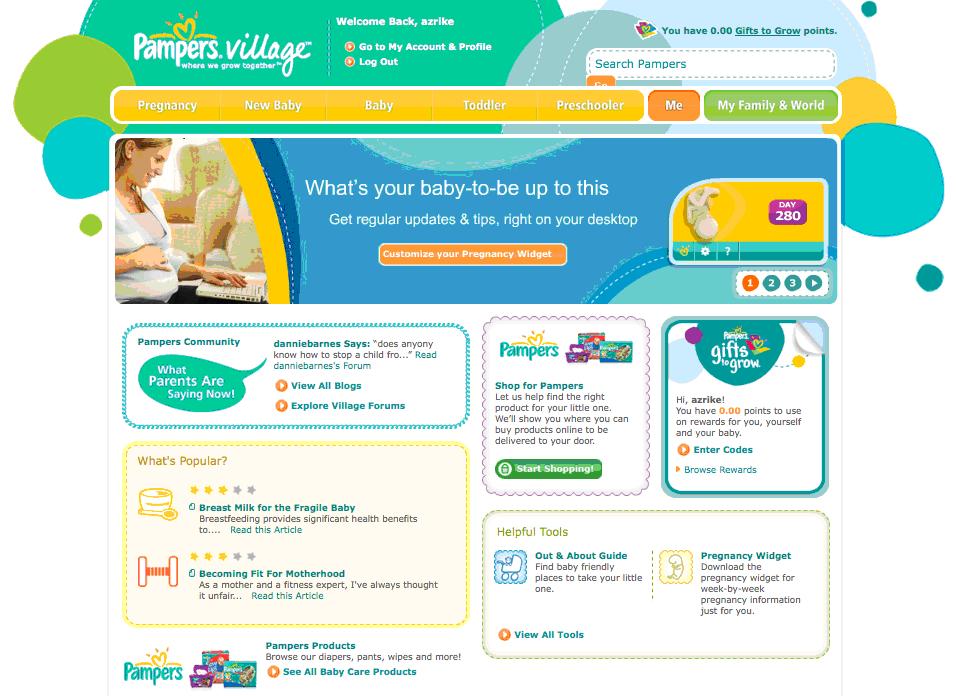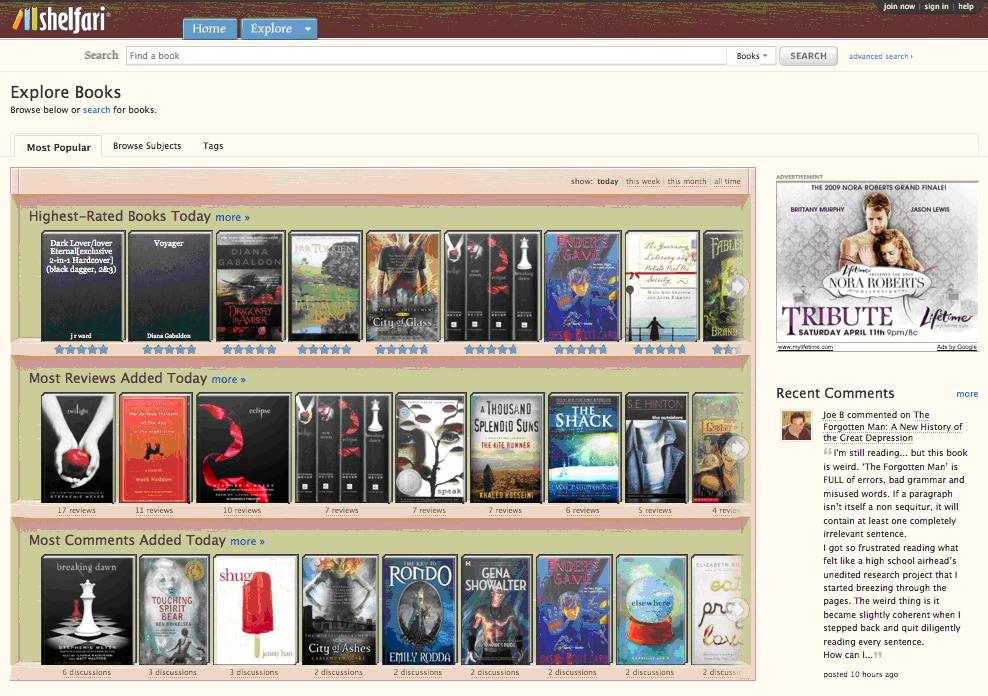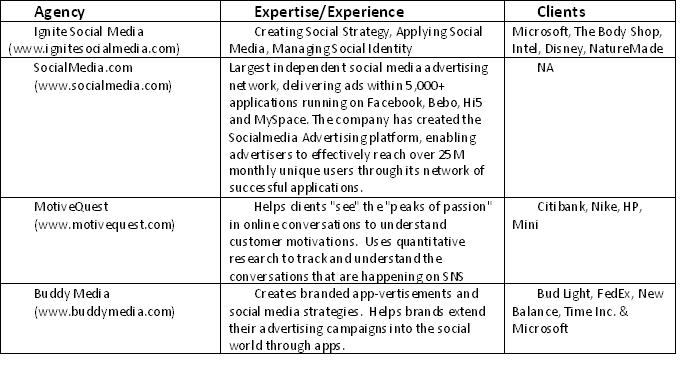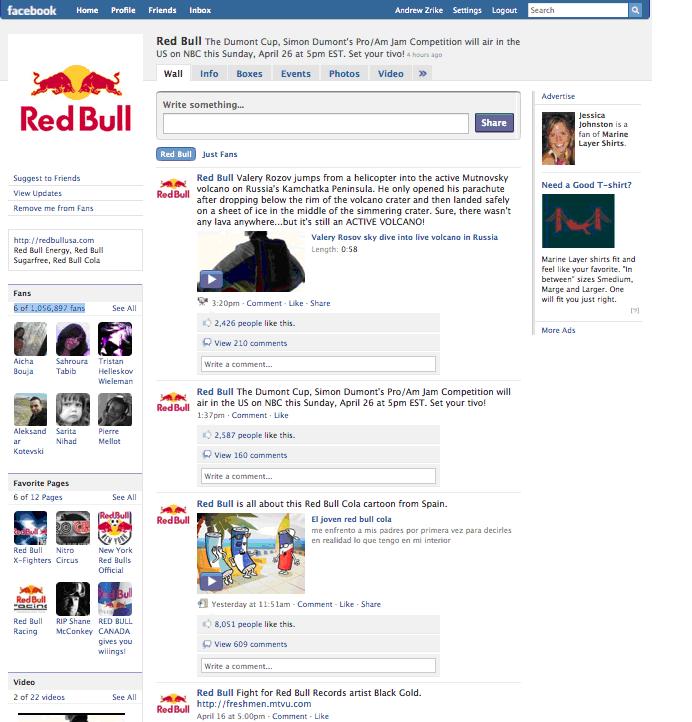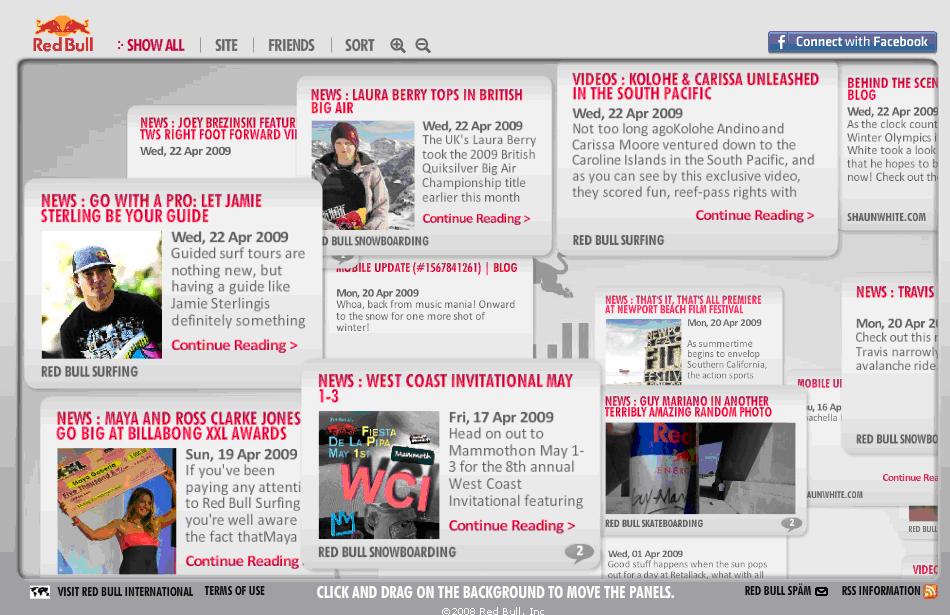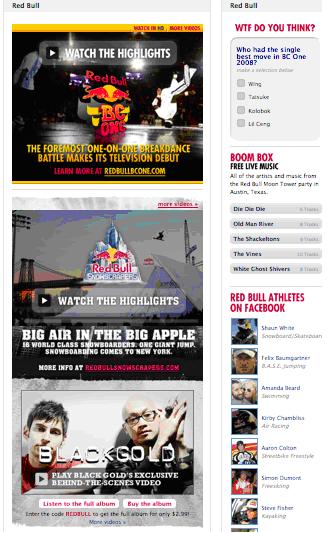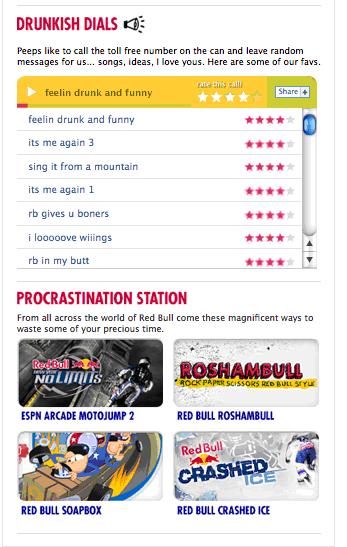Using Social Networking for Marketing
From The Yaffe Center
Acknowledgements
A large portion of this Wiki was taken from research papers of two students at the University of Michigan Stephen M. Ross School of Business. One of these research papers is “Marketing Strategy For Social Networking Sites” by Andrew Zrike. The second research paper is “Buzz in Practice” by Joseph Ferencz and Stephen Hellerman.
What is Social Networking and How is it Relevant to Marketing?
Social Networking - It's the way the 21st century communicates now. Want to know what it really means?
Social Networking is the grouping of individuals into specific groups, such as small rural communities or a neighborhood subdivision. Although social networking is possible in person, especially in the workplace, universities, and high schools, with the advent of the Internet and related technologies, it is most popular online. This is because unlike most high schools, colleges, or workplaces, the internet is filled with millions of individuals who are looking to meet other people, to gather and share first-hand information and experiences about any number of topics from golfing, gardening, developing friendships and professional alliances.
What Are Social Networking Sites (SNSs):
The term social networking site is used to describe a broad spectrum of online destinations. Generally speaking, a SNS is an online community of people who are looking to use the web to communicate with other members of a community. They are often built around a group of individuals with shared interests/activities or a desire to explore the interests and activities of others.(1) Although SNS have been a part of the Internet landscape for over a decade, the last 4 to 6 years have been marked by a tremendous increase in the number of sites and site traffic, to the point that social networking is now one of the top uses of the internet. The number of users and the amount of time that they spend online is so substantial that these sites are having and will continue to have an impact on the way that people consume media and interact with the world around them.
When it comes to online social networking, websites are commonly used. These websites are known as social sites. Social networking websites function like an online community of internet users. Depending on the website in question, many of these online community members share common interests in hobbies, religion, or politics. Once you are granted access to a social networking website you can begin to socialize. This socialization may include reading the profile pages of other members and possibly even contacting them.
The friends that you can make are just one of the many benefits to social networking online. Another one of those benefits includes diversity because the internet gives individuals from all around the world access to social networking sites. This means that although you are in the United States, you could develop an online friendship with someone in Denmark. Not only will you make new friends, but you just might learn a thing or two about new cultures or new languages and learning is always a good thing.
As mentioned, social networking often involves grouping specific individuals or organizations together. While there are a number of social networking websites that focus on particular interests, there are others that do not. The websites without a main focus are often referred to as "traditional" social networking websites and usually have open memberships. This means that anyone can become a member, no matter what their hobbies, beliefs, or views are. However, once you are inside this online community, you can begin to create your own network of friends and eliminate members that do not share common interests or goals.
Social Networking Site Statistics and Demographics
While the exact size of the social networking population is difficult to measure given that there are so many different types of sites and services that can be included, in March 2009, there were approximately over 250 million people who use social networking sites every month.(2) According to Nielsen Media “two-thirds of the world’s Internet population visits a social network or blogging site and the sector now accounts for almost 10% of all internet time.” The substantial growth of SNS makes social media sites (aka member communities) the 4th largest sector of the Internet in terms of traffic.
The growth of SNS has been driven by MySpace and Facebook, the latter of which is now the largest and fastest growing SNS in the world. While Facebook’s population is growing, as of March 2010, “MySpace” is losing reach. The growth of Facebook, MySpace, and the other major sites will be analyzed below.
Demographics of SNS as of November 2009(3)
• In November 2009, 61% of internet users had a SN profile, compared to 41% in October 2008.
• Women are now more likely than men to be on at least one SNS (63% to 59%). This is a shift from a year ago, when men stood ahead of women (43% to 39%).
• Over-55s, while still showing lower penetration than younger respondents, are the fastest-growing age groups on SNS. Some 46% of 55-64-year-olds and 36% of over-65-year-olds have SN profiles, up from 24% and 10% a year before, respectively.
• Respondents with household income exceeding $100K increased in penetration for profiles from 34% to 63%.
• The average respondent has 123 friends or contacts on his/her most used SN.
Top 5 Social Networking Sites
As of 2010, there are over 200 social networking websites that are available. However, there are only a few which are popular with a significant portion of the surfers.(4) Below is some social Networking Sites and their number of unique visitors.
Mintel Reports – Social Networking February 2010
The 5 most popular social networking sites are listed below:
A. Facebook:
Launched in 2004, Facebook is now the largest SNS in the world and the 5th most visited site in the world.(5) The 108.3 million unique visitors that logged into Facebook in December of 2008, represented 30% of the world’s Internet population.(6) The site originally began as an online social network for college students, then expanded to include high school students, and now is open to anyone over the age of 13. Facebook has been able to distinguish itself by having a relatively simple, closed interface, and an initially limited membership policy. Facebook experienced incredibly rapid growth following the decision to lift registrant restrictions. Nielsen Media also attributes the site’s growth to its easy to use design, broad appeal, focus on community and communication rather than entertainment, inventive features (including applications, invites, requests), open application development architecture, and highly customizable privacy controls. (7)
B. MySpace:'
Launched in 2003, MySpace introduced a service that mimicked the strongest features of Friendster.com, which at the time was the largest SNS. The site grew rapidly following its introduction and already had 3 million users 3 months after going live. MySpace is set up so that anyone can customize their profile page with virtually no restrictions. While this open environment allows users greater control over their presence on the site, it also has led to usability issues since poorly constructed MySpace profiles can cause slower, inconsistent speeds. The speed of the site and irregular pages led PC World to name MySpace the #1 worst website ever. (8) The site has been redesigned several times in order to mimic Facebook’s success including the introduction of status updates and applications. Although MySpace is losing momentum, it is still is the preferred site for users who want to connect with entertainment content. Artists (primarily bands) have the ability to communicate with their fan base, post music, and earn new fans by creating and customizing profile pages at little to no cost. As a result, the site continues to stay relevant as the best SNS to distribute and find media content.
C. Classmates Online:
Launched in 1995 (the earliest of any of the top sites), Classmates Online helps users find, connect, and then keep in touch with friends from throughout the users life. Classmates Online is unique because it generates a substantial portion of its income from paid subscribers (3.5 million as of May 2008 )(9). Basic members can create profiles with their photos, biographies, timelines, interests and announcements, as well as search the entire social network service for friends. Basic members may also post to and read community message boards and view information about upcoming reunions. Gold members, who pay a fee, can send email to and receive email from any member, view notes posted on their profile bulletin board, see the names of others who have visited their profile and signed their guest book, access and use tools for planning reunions, and create their own private groups. (10)
D. Orkut:
Launched by Google in January 2004, the site initially began as an invitation only site. Most of the sites users come from Brazil, where it has had success thank to Brazilian students who were encouraged to get all their friends to join. As a result, Orkut is the most visited site in Brazil, and with 70% of the SNS users, the strongest domestic reach of any SNS in the world. (11) Orkut also is the largest SNS in India, whose users make up 17% of Orkut’s user base. The site has many of the same features of other SNS, but also benefits from its relationship with Google, which allows users to feature videos from YouTube and Google Video on their page. There is also an option to integrate GTalk (An instant messenger from Google) with Orkut, enabling chatting and file sharing. (12)
E. LinkedIn:
Launched in December of 2003, LinkedIn’s user base is made up of business people looking to network. Currently LinkedIn has over 36 million members in over 200 countries and territories around the world. (13) According to LinkedIn.com the site is “an interconnected network of experienced professionals from around the world, representing 170 industries and 200 countries. You can find, be introduced to, and collaborate with qualified professionals that you need to work with to accomplish your goals.” (14)
F. Additional Major Social Networking Sites:
Strategy: How Marketers Can Use SNS:
SNS sites are potentially useful for marketing for following reasons:
1. Targeted Message: SNS sites allow companies to target their marketing efforts:
Most social networking sites require users to enter information on who they are and what they are into. This information can then be used by the SNS to assist marketers to reach their consumer targets who are using the site. For instance, on Facebook, (as seen in the below image) targeting parameters include: country, state, city or town, age, gender, interests, activities, music tastes. Using this targeting data, marketers can then decide if they want to use SNS to reach a general audience or to reach a very specific target group. For example, a marketer could decide to deliver ads on Facebook specifically to 18-21 year olds, who live in the northeast, who are single, and who play basketball, and listen to rap music.
2. Build customer engagement with brands and companies: SNS users engage with brands:
SNSs create profiles in order to communicate with other users. Sometimes, users interact with and add their favorite brands to their personal profiles to add an additional dynamic to the story they are telling their SNS friends with their profile. This phenomenon is evident in a recent survey administered by Forester research. The survey found that more than 30% of 18-26 and 27-40 year old Facebook users are interested in seeing marketer profiles online. Furthermore, their level of interest to interact with brands increases the longer they have been a member of the SNS.
SNS uses are interested in interacting with brands, however only if the content is unique/compelling, provides value, and is relevant to who they are.
Since customers want to engage with their favorite brands, the most common approach to marketing on social networking sites is to set up a profile for the brand, which members can then join, or “friend.” For example, the movie X-Men: The Last Stand has more than 2 million MySpace users as friends. And it works: Many SNS users actually welcome interactions with the brands that they love. Almost half of all adult daily SNS users say that they would be open to seeing profiles from their favorite marketers. (15)
Viral, downloadable elements deliver most of the marketing value in an SNS campaign. The study also found that the biggest impact on marketing results came when social networking site users incorporated a downloadable element — like an Adidas wallpaper or badge — into their own profile pages. On those user pages, these brand elements take on a life of their own because users provide context and meaning for the brand: A user’s friends see it, download it themselves, or tell others about it. In other words, once users become actively engaged with the brand, they become brand advocates.(16) The Marketing Evolution study found that more than 70% of the marketing value created by the social network marketing campaigns resulted from the “momentum effect” of these viral, pass-along elements spreading across the network.(17) Moreover, display ads played a catalytic role in driving awareness and traffic to the profiles — in effect, kick-starting the viral process.
3. Size and breadth :
Social media is mainstream: As reviewed in the current landscape section above, SNS is no longer a niche online activity; it is now one of the primary uses of the Internet. Some stats as of October 2008 that marketers should be aware of: The top social networking sites receive approximately a combined 250 million unique users per month Two-thirds of the world’s Internet population visit social media sites (SNS + Blogs) 10% of all internet time is social in nature More than half of the most trafficked websites in 2008 were social in nature Television viewership and periodical use is down. Online consumption is up.
Marketers gravitate to where people are, and in 2009, people are using social networking sites.
When SNS began to first gain popularity in 2003/2004, users tended to be 20 something trendsetters. However, as the sites have become mainstream, the SNS user base has become more diverse, as evident by the Facebook user demographic breakdown below.
Furthermore, per Adage.com, as of January 2009, more than 50% of Facebook users and 44% of MySpace users in the U.S. were over 35 years old, while according to Nielson Online, Facebook’s greatest growth in global audience numbers is coming from people aged 35-49. While SNS’s original demographics made it an environment that attracted primarily youth orientated marketers, today, the diversity of SNS users makes it a worthwhile marketing tool for a wider variety of companies.
Users are fairly concentrated and therefore easier for Marketers to reach: The top 5 social networking sites have 241.5 million unique visitors per month, which is over ¼ of all monthly SNS users. Since the top 2 SNS (Facebook and MySpace) have a total reach of over 180 million unique people every month, marketers can concentrate on these larger sites in order to reach a large piece of the SNS pie. This is extremely valuable considering the fragmented media environment that exists today.
4. Increase Awareness
Some users learn about new products on social networks themselves, usually by seeing a brand associated with their friends. In a recent survey, almost one-fourth of daily youth social networking users said that they learned about new products on social networking sites. (18)
5. Create Buzz
Traditional marketing, such as a television ad showcasing a laundry detergent’s relative cleaning power, is a linear marketing strategy, the goal of which is grab a consumer’s attention for long enough to deliver a scripted message. Buzz marketing represents a divergent marketing strategy; its goal is to leverage the impressions created by an initial marketing message by inciting consumers to organically spread that message or an interpretation of that message through the consumer’s social or professional network. Buzz marketing can serve a wide variety of products and be implemented in countless ways. The one thing that all Buzz campaigns have in common is that they get consumers and media outlets to spread the message for free. Outside of that, Buzz, if properly executed, can serve any product or service. Some campaigns use the internet to allow consumers to spread information or participate in games or contests, other campaigns attempt to get the mainstream media to pick up a story or piece of content and spread it to consumers, who will then talk about it with each other, still other campaigns offer free products to consumers in the hope that they will then tell their friends about it. Pick any media where information can be transferred, any product category, and any genre of marketing content, from purely functional to purely entertaining with no over commercial message at all, and Buzz marketers have attempted to find a winning combination of those factors to accomplish their business goals.
For more information on Buzz Marketing, click here.
Tactics: How Marketers Use And Should Use Social Networking Sites
The below sections will give general and specific guidelines on what marketers should and should not do when using SNS to reach their consumers. It will also provide an overview of the different tools and techniques that they can use achieve their SNS marketing goals.
General Guidelines:
As social networking sites work to make themselves more useful to their users, the sites continuously introduce new features and redesigned layouts. The negative effect of this constant innovation is that marketers need to figure out how to develop relevant marketing campaigns that reach and engage consumers despite the constant change that is part of the SNS landscape. As a result, marketers need to develop SNS initiatives that can cut through this constant change and resulting clutter on the sites and that also add value to the experience of users. According to Brenna Sweeney, Digital Manager at MillerCoors, “Frequently marketers think that you can communicate with consumers using the social media the same way you would talk to them using traditional media. You need to talk to them in a way that is unique to the social media channel you are using.” Given this environment, SNS marketing efforts should follow the below guidelines in order to be successful given the unique environment of SNS:
• Be Unique and Compelling: There is an incredibly large amount of content being produced by marketers, media companies, and users on the web. There is an incredible amount of new features being introduced by the SNS companies themselves. As a result all SNS marketing efforts need to stand out in this cluttered environment.
• Provide Value: Users are on SNS sites to communicate with other users. Not to be marketed to. As a result, in order to engage users, marketers need to create campaigns that contribute to the experience of the target user and the SNS as a whole. In order to make sure your SNS is providing value, you should be able to answer the following questions: Does the marketing effort provide valuable content that supports the community members’ goals? Content must attract and appeal to community members by aligning with their core drivers and interests. Examples of compelling content include: media, interactive games, contests, behind-the-scenes photos, and music.
• Connect SNS Efforts To Business Objectives and Other Marketing Campaigns: Like all campaigns, SNS marketing should connect back to your business/marketing objective. SNS marketing efforts should connect to non-SNS campaigns. They will have a greater chance of success if they promoted from other locations (company websites, blogs, etc) outside of the SNS. In order to make sure that your SNS is connecting SNS efforts to business objectives and other marketing campaigns, you should be able to answer the following questions: Are key elements of the marketing effort available where needed? Members should find content and features where they expect them. Experiences should give priority to the most important attributes — such as videos — to avoid causing confusion. Is there an appropriate call to action? Brand marketers need to make clear what they want each member to achieve, from registering to win prizes to learning more about products, to actual eCommerce. The most effective calls to actions will take place in the context of the community and use community language to provide members with a reward they would actually prefer.
• Update Frequently: SNS users frequently log into their accounts several times a day. Marketers should dedicate resources to have their pages updated regularly to engage consumers and make their connection to your brand worthwhile. Does the company participate in the effort on an ongoing basis? Brand representatives and employees should interact with community members by welcoming and supporting them and participating in the ongoing conversation.
• Foster communication: SNS is all about communication. Marketing efforts on SNS should also center around communication. When possible involve functionality that allows users to communicate with each other and the brand/marketer to interact with users. In order to make sure your SNS is fostering communication, you should be able to answer the following questions: Does the marketing effort encourage member-to-member participation? Social networks allow members to talk, share, and gesture to each other. Interactive marketers must capitalize features that support these activities, like Q&A, social games, and discussion forums. Does the marketing effort encourage member-to-Web site interaction? In many cases, member-to-Web site interaction can fuel an ongoing level of engagement with a community. By providing features such as games, quizzes, or media campaigns, companies entice members to spend more time interacting with the marketing effort. Does the marketing effort allow the members to share the elements to other locations? Social networks are efficient word-of-mouth engines. As a result, marketers should leverage the tools that enable members to quickly share their interests with their peers. Successful features include: embed codes, profile sharing, customized home page layouts, widgets, and badges.
• Make It Scalable/Viral: A key component of SNS is that it allows for the quick distribution of information. Marketing efforts on SNS should also be easily distributed/shared and include functionality so that they can be spread virally and ultimately reach and impact a greater number of users. The more scalable/viral your execution is the greater change that it will have a large and long term impact. For scalability to work, you should be able to answer the following question: Is the marketing effort self-fueling? Marketing efforts that turn over control to members benefit because the community supplies ongoing value. The most successful efforts build long-term relationships between consumers and companies to fuel brand affiliation.
Different SNS Media Types
1. Traditional Banner/Display Advertising:
The most traditional form of online advertising is banner ads. Like most other highly trafficked web sites, SNS offer marketers banner/display space to reach the large, diverse, and engaged audiences found on SNS.
SNS Banners Need To Follow SNS Guidelines: SNS are not regular websites and therefore marketers should not merely leverage their existing online display assets on these sites. In addition, according to ComScore, banners only generate a 0.1% click-through rate. Given the low CTR of banners, running traditional banners in an environment that is all about communication and engagement would be a waste of media dollars. In addition, SNS pages are often cluttered. Running a non-engaging ad on a cluttered page might hurt your brand more than it helps your brand. Banners need to be engaging or else they will get lost on cluttered SNS pages.
It is up to Marketers To Create Banners Specifically for SNS: “If the ads are related to what I am into I will click on it.” As emphasized by a participant in a focus group, marketers need to create banners that are relevant to the SNS audience in order to cut through the clutter found on these sites. These banners also should contribute or relate to the experience users have on SNS. An example of a well-executed SNS banner ad can be found below. The screenshot from MySpace.com features an animated banner that is advertising a CITI card created specifically for MySpace users. The banner is animated, stands out on the page it is on, and offers something that is relevant to MySpace users.
Luckily for marketers, SNS sites are developing tools to help banners become more engaging. To assist marketers, SNS sites are looking to offer functionality that leads to better engagement and tracking. For example, Facebook recently began to allow users the ability to give an ad a thumbs up or a thumbs down on whether they like it (image below). This allows marketers to track whether users like the ad and find it compelling, and to draw attention and interaction with the ad. Ads can also be integrated into updates sent out to users’ friends. As a result marketers should create ads that fits graphically and contextually with the content on profiles.
2. Profile Pages:
The simplest way for marketers to engage with their consumers is to create a brand page. Most social networking sites allow companies to create pages for free that will give them access to the millions of users that are part of the social networking community. As mentioned in an earlier section, some users like to engage with brands to build their profiles. This often leads users to create brand fan pages on their own. For example, a search on Facebook brings up over 500 fan pages. Fan created pages can serve as a positive marketing tool for a brand. A fan created coke page has 3.3 million fans. Coke now works with the creators of the site, to distribute relevant content to Facebook. However, the coke example is an anomaly, and the only rationale that can be found for why this site drew more fans than the other Coke pages was that it had a crisp hi res image of a coke can.
Branded Profile Obstacles/Challenges: While having a large number of fan pages on a SNS can be positive since they demonstrate the loyalty of users, they can also lead to a fragmented fan base on a SNS. Take the case of Nutella. Currently there are 122 Nutella pages on Facebook. The product pages have about 3 million fans altogether. If Ferrero Rocher, maker of Nutella, managed those pages, the company could engage all those users in marketing activities. However, since Ferrero’s Facebook page only has a total of 1,200 fans, they can reach only .4% of the Nutella fans on facebook. (19)
Profile Page Best Practices: When a brand creates their own social networking page, instead on relying on fan built pages, they have complete control over the content and can update it in order to deliver relevant content to SNS users. However, each SNS offers companies a unique level of customizability and level of interaction with fans. MySpace for example, is heavily customizable and as a result the marketers can build a profile page that has a look and feel that directly ties into the brand’s strategy. This is demonstrated by the cherry coke page below: http://www.myspace.com/cherrycoke
Facebook fan pages are much less customizable and look and work just like a traditional Facebook user profile. As shown in the Red Bull brand page below, Facebook brand pages can be more cluttered than MySpace pages (depending on how the marketer decides to design the MySpace page). In addition, since they are made to look like a regular Facebook profile page, the page does not convey that it is an official representation of a major consumer brand.
Facebook’s brand pages act like a traditional Facebook profile page, and interact virally with the millions of Facebook users. This means that if a company updates their brand page, a news item updating all of the brand’s friends will appear on their newsfeed home alongside the fan's friend news updates. This means that if a fan of your brand’s page is reading their newsfeed to catch up on what's new with friends, they will also get updates from your brand in this same space.
3. Interacting with Consumers:
The open dialogue that is an integral part of SNS provides a tremendous opportunity for brands to connect with and enter into a dialogue with their consumers. The comments that are left and discussions that take place on brand and fan pages can act like unorganized focus groups and give brands a sense of how consumers really feel about their products/service. In addition, the ability to have a two-way conversation with users gives companies the opportunity to reach out to loyal consumers and inspire non-loyalists. According to Chris Bowler, vice president of social media at Razorfish, “If you can really tap into and ignite your core-brand evangelists, you use that to spread the word and invite others in.” (20)
Effective Ways to Listen to Your Consumers: It is important for marketers to realize that just because there are negative comments about your brand online, doesn’t mean that all your consumers feel this way. The comments being left on your site are potentially only the opinion of a couple users who like to talk rather than the majority of your consumers. Below is some guidelines published by adage.com that can help brands better listen and respond to consumers on SNS : (21)
• Know Your Consumer Social Media Habits:"What you see is not necessarily representative of people using the social technologies, but the people using those social technologies and like to talk," (Forrester analyst Josh Bernoff.)
• Have a Response Mechanism In Place: Don't wait until you have vocal critics to design a response plan. Rather than pulling your content and issuing an apology that can confuse the 90% of people who weren't aware of the criticism, you can engage those who are angry.
• Look For Changes In Chatter: If suddenly the conversation doubles, or if people start talking about your brand in a way they weren't the day before, something important is happening. "Changes in attitudes are more significant than attitudes themselves," (Forrester analyst Josh Bernoff.)
• Pinpoint Passion: Your critics can provide you with insight you didn't know existed. Not all criticism is cause for action. But it is cause to dig deeper.
The Danger of Ignoring Your Consumers: Since SNS captures unfiltered conversations there is a definite danger if a brand ignores the conversations that users are having. While consumers discussing your brand can be a positive thing, it can also hurt your brand if the comments are negative and are being ignored. For example, Target’s official page on Facebook is updated with content and advertising to promote the brand and current online/in store promotions. The page also has a comments section that is clearly not monitored by anyone at Target. Comments (which can be seen in the image below) such as “Worst Company Ever” and “Thanks for outsourcing American jobs” are posted for everyone to see. These comments take away from any positive impact that Target’s Facebook has. While Target should allow visitors to have open conversations on their page, the brand should also not allow messages that are directly disparaging to the company remain on the page. If the page was regularly monitored, Target could not only delete these comments, but also reach out to the user to better understand their distaste for the company and see if their opinion can be changed. A negative comment could then possibly result in generating a new customer.
4. Create Applications/Widgets:
Applications/widgets are a great way to create engaging brand content that can enrich the experience of SNS users. In addition, applications/widgets are extremely customizable, allowing marketers to interact with users in a way that is relevant to their brand and the experience of SNS users. Application/Widgets frequently come in the form of online tools (clocks, event countdowns, auction-tickers, stock market tickers, flight arrival information, daily weather etc) and games.
Branded Application Obstacles: Although, apps have proven to be one of the most compelling features of SNS, companies shouldn’t assume that just by creating a fun game with your brand name on it that you will galvanize consumers to purchase your product. The space is extremely competitive with application developers and brands continuously launching apps that all vie for the attention and time of users. For instance, as of July 23, 2008, the number of Facebook applications had topped 33,000. (22) As a result of this hyper competition, major brands that have the money to stand out in the world of TV advertising, such as Coca-Cola, Champion, Ford and Microsoft, have all created branded apps for facebook that have generated very little attention and users.
Mike Lazerow, chief executive at Buddy Media, a company that builds social media branded applications for brands says that there are three major reasons why branded apps on social networks fail:
• They are not social: Branded applications work much better when they connect people. If their main purpose can be accomplished better outside of a social network, they probably should not be launched as branded social apps in the first place. The core of the application should be sharing, evangelizing, entertainment.
• They are too complicated: The best applications are easy to use. They have clear calls to action and can be used with a few clicks of the mouse. For example, the Buddy Media application, Chevy Fuel Finder allows users to easily search for the cheapest gas prices in any geographic locale.
• They are not marketed properly: Applications don’t just go viral by themselves. They need to be marketed. Branded applications are both ad units and marketing platforms and need to be promoted as such. That being said, brands need to evaluate their business needs and identify a social media strategy that integrates the features and values of the brand.” (23)
Application Best Practices: Despite the challenges and hyper competition, companies can successfully leverage an application as a marketing tool. Below are a few examples:
Rather than create a brand new application, companies also have the option to rebrand a successful existing application. For example, Sony ran a campaign in partnership with the popular “Vampire” Facebook game and rebranded it in order to generate awareness of the vampire film “30 Days Of Night”. As part of this effort, Sony placed banner ads on the rebranded vampire application and promoted a related sweepstakes. During the three weeks that the rebranded application was live, there were 59,100 sweepstakes entries and traffic to two of the application pages were 11,642,051 and 17,652,567. The effort was successful for the following reasons:
• Sony went were people already were (3 million existing users)
• They relied on a game that was a proven success
• Their advertising for a vampire movie complimented the game
5. Create Branded Social Networking Sites:
In order to exert greater control over social media marketing efforts and to connect directly with their consumers, companies can choose to create their own social networking site. A company run SNS allows a business to work outside the limitations of established SNS like Facebook and instead create an environment that meets the specific needs of the companies consumers.
An example of this is Procter & Gamble’s Pampers Village. Pampers Village is an online community that allows moms and soon to be moms to connect with each other. The site has traditional SNS functionality such as user profiles, discussion forums, and widgets. According to Jodi Allen, North American vice president and general manager for Pampers, the site is built around the common experience that moms have. She says, "All moms share a common goal -- to raise a healthy, happy child. And the great thing about Pampers.com is that moms can connect, bond and chat with other moms all over the globe in real time and share in each other's experiences.". As a marketing tool, the site demonstrates that Pampers understands mothers, and works to establish a relationship between the brand and the mother that will potentially continue throughout the mother’s Pampers buying life.
Another example of a company run social networking site is amazon.com’s Shelfari. According to their website, Shelfari is a “ global community of book lovers and encourages them to share their literary inclinations and passions with peers, friends, and total strangers.” While getting consumers excited about books is great for Amazon, the real benefit of Shelfari for Amazon is that it drives the sites users to purchase the books they discover from amazon.com.
Financial Services and B2B companies, which typically have had trouble connecting to consumers using general social networking sites like Facebook, are also creating their own social networking communities to better connect and understand their consumers. For instance, instead of building a major presence on a site like Facebook, Bank Of America has opened a member site called “Small Business Online Community.” The site gives small business owners who are Bank of American customers the ability to connect with each other and to speak to Bank Of America in an unfiltered open manner. The site allows consumers to better understand what their bank offers them while also helping them build a relationship with other small business owners. The site allows the bank to better understand their customers, while also extending their brand in a much more personal way than through traditional CRM techniques. (24)
Company Created SNS Has Its Dangers: Similar to the concepts discussed in the section above (The Danger Of Ignoring Your Consumers), opening a company run SNS gives users the opportunity to post negative comments and discuss issues that they have with the company and its products. Companies who go do decide to open up their own SNS must realize that negative comments are a strong possibility and should have a set procedure on how to deal with these comments in a productive fashion (merely deleting them is not enough.) Site managers should follow the guidelines given above on how best to listen and respond to consumers on SNS: know your consumer’s social media habits, have a response mechanism in place, look for changes in chatter, and pinpoint passion points.
Implementing a SNS Campaign
Implementing a SNS Campaign should be implemented by a step-by-step process following the order shown in the flow chart below:
Now, let’s look at each step in greater detail:
Setting Goals
• Purge the term “campaign” from your social media lexicon: Interactive marketers are familiar with deploying short-term marketing campaigns, but when it comes to communities, marketers must think long term. Brands with short-term objectives should think bigger by involving the lifestyle needs of communities of interest. For example, Ernst & Young, in order to recruit college students launched an ongoing dialogue with a Facebook group where recruiters and students participate in a perpetual discussion — and didn’t just post banner ads that said, “We’re hiring.”
Choose Tactics
Social Networks require a different approach from traditional marketing; rather than focusing on short-term campaigns that reach many people, community marketing requires close personal interactions between its members and the brand.
• Develop community-centered content and activities: How can brands improve their chances of providing great marketing efforts to communities? By establishing a community centric experience that begins with the needs of the members. Start by understanding the core drivers of each community, their languages, and how they express themselves. Then, draft your plans to meet the needs of the community first, and give members the ability to sit in the driver’s seat. For example, BMW let members create their own BMW-themed art using Graffiti, then comment, vote, and share with others. (25)
• Work With Agencies: With the growth of SNS has come the emergence of agencies that specialize in SNS. While most traditional advertising agencies also will offer social media expertise, there are now several agencies that exclusively specialize in helping companies navigate and understand the constantly evolving world of social media and figure out the best way to reach their consumers. According to Julie Wexler, Digitas Digital Account Manager at MillerCoors, social media agencies play an important role in helping her company develop a social media strategy. “They have a lot of knowledge and experience on how social media sites work. They can help your company maneuver the hard to understand world of social media and figure out what works best for your brand.” There is a growing belief among marketers that the social media environment is too unique and fast moving for the traditional agencies to be able to truly understand. "I think traditional ad agencies have very little contribution to make," Bryan Simkins, a marketing specialist at FedEx said. "They are mostly driven by their compensation models which are made for closed media. Those models don't apply in open media." (26)
Work with your agency, but only if it has SNS expertise. While top agencies like Avenue A | Razorfish, Blast Radius, and Organic have detailed customer relationship maps at their core of their process, agencies vary widely in their ability to engage with users at an individual level. Brides.com didn’t use its agency at all and worked directly with MySpace, while Ernst & Young started its Facebook effort on the recommendation of its agency. Interview your existing agency to check its level of understanding of how to use social networking sites — and avoid the firm if it doesn’t appreciate the special nature of this community. (27)
Below are several top social media agencies:
• Be prepared to participate: Interactive marketers should think of online communities like an event hosted at their own physical company where guests will have expectations of being welcomed, having their questions answered, and getting help in achieving their goals. The same principles apply to the most successful communities; marketers should start by budgeting, training, and assigning members of the team to be active contributors to the community. First, develop internal teams, and set their expectations by providing a solid plan for supporting ongoing programs. Then train or hire a community manager to be an active participant and community shepherd. (28)
Create/Launch SNS
When you have launched your SNS, make sure you link it to your main website and your customers know about the SNS.
Measuring Effectiveness : Choose and Use Metrics
Use the right metrics. Counting just the number of friends linked to the brand only scratches the surface of SNS value. As the MySpace and Marketing Evolution study with Adidas and Electronic Arts showed, the marketers’ SNS metrics could be tied back to the original goals of the marketing campaign — such as increased brand awareness and purchase intent — thanks to elements like viral downloadable badges. Chase +1 on Facebook rewards activities like taking a credit education quiz that users can then redeem for merchandise on Amazon.com or gift to a friend or charity of their choice. In the case of the Chase +1 campaign, three metrics were most important: 1) brand awareness in Facebook; 2) number of credit cards linked to the group; and 3) usage of the cards after the sign-up. The benefit of using these three metrics is that they can be used to compare Facebook’s performance against other marketing channels — and also as a baseline to tweak elements within the Facebook presence itself. (29)
Measure success based on new criteria: The successes of social marketing efforts are often defined by the interaction and engagement within a community — not just the traditional “page views” metric. To accurately measure the results produced by such efforts, start by educating your marketing team in the ways they should start thinking about this new medium. For example, interactive marketers should know how quickly members share among each other, how many messages are shared, and the overall interaction within the community.
Improve
Getting instant feedback from customers through SNS can give great opportunities to improve the effectiveness of the marketing message.
Case Study: SNS Marketing Success Stories:
1. Red Bull On Facebook And Use Of Facebook Connect
Among all the brands that use SNS to connect to fans, Red Bull stands out. First, by integrating social media concepts and viralability on its own website, then MySpace, and now with their presence on Facebook. While most of the content they have on Facebook is available on their other web sites, by having the content available on Facebook, users can find it all in one place, comment on it, and easily share it with their friends. Their success in this space is evident by the 1,056,897 fans Facebook fans. However, Red Bull stands out not only because it is a top Facebook page in terms of number of fans, but they also been able to generate a high level of interaction with these fans. Below I will describe the following approaches that help to make them so successful on SNS: Frequent contact with fans, innovative use of Facebook Connect, and creation and distribution of original content/applications.
Red Bull Sends Out Frequent/Engaging Messages and Content To Fans:
As evident by the below snapshot of their Facebook wall page, Red Bull is constantly communicating with their fans. From the page, you can see that Red Bull has sent out 6 messages to their page fans in the last week (2 in the last day). These messages take advantage of the most recent Facebook redesign, which allows Red Bull to send out messages that look and read like messages that an average Facebook user would send. However, more importantly than just sending out frequent messages, Red Bull sends out messages that contain content that is relevant to their 1,000,000 fans. Instead of drilling the Facebook fans over the head with marketing messaging, Red Bull instead sends users messages that include streaming videos, music, and links that are relevant to the Red Bull’s target audience. Evidence of the success of these messages is apparent by the large number of individuals that are using the interactive thumbs up feature (to show that they like the content) and leaving comments discussing the message that Red Bull has sent out. Some of messages viewable on the wall from the screenshot below have over 8,000 people who indicate that they like it, and several have over 500 comments. Red Bull is clearly hitting a chord and spurring interaction with these messages.
Red Bull Is One Of The First Brands To Use Facebook Connect:
In July 2008, Facebook announced Facebook Connect, which enables users to login to affiliated sites using their Facebook account and share information from such sites with their Facebook friends. Rather than start their own SNS, Red Bull instead decided to capitalize on the popularity of Facebook and their over 1 million Facebook fans, and created an environment that integrates an Red Bull site with Facebook. As a result, users of this site, called Red Bull Connect, and Facebook, can seamlessly jump from one environment to the other.
The content on Facebook Connect closely mirrors the content found on Red Bull’s Facebook page, however, in this environment you are able to drag and organize the stories and updates as your desire (customizability that is not possible on Facebook proper). Since the user is still connected to Facebook, they are able to comment on the stories using their facebook profile. Users also have the ability to meet and become Facebook friends with other people who are on the Red Bull Connect site. Once you become friends with someone via Red Bull Connect, you are also given updates on what they have been doing on the site, similar to the Facebook newsfeed. As a whole, Red Bull Connect capitalizes on the connection that Red Bull has made with Facebook users and gives them a new and dynamic way to engage with the brand.
Red Bull Uses Original Content To Engage Users:
Red Bull profiles also gives users access to a large amount of interactive content. There are games, widgets, free downloadable music, streaming video, links to Red Bull athlete pages, a calendar of Red Bull events, discussion boards, and surveys. The majority of this content has an interactive/viral component so that if you like it you can spread it to your Facebook friends. Red Bull understands that these applications shouldn’t force Red Bull branding and marketing initiatives down users throats, but instead they use the Red Bull brand as a starting point to engage users with content that they will want to interact with. The higher quality the content is, the stronger the brand association becomes for these users.
2. Volkswagen On MySpace with Helga
Volkswagen has taken a cool approach of building a community on MySpace. Marketers at Volkswagen created a MySpace profile page for Helga, the German character who appears in some of the company’s TV commercials. Visitors learn Helga’s likes (“I love the smell if gasoline. Gears turning, oil burning, stomach churning. Go fast or go home. Efficiency.”) and Dislikes (“Pimped rides, bumper balls, people in the left lane going 40 with the blinker on. Traffic. Scorpios, you can trust them.”) Users can download ringtones, images of Helga, and short audio clips in Helga’s strong German accent. (30)
Why SNS Marketing Attempts Fail:
Most social network marketing isn’t being done effectively. This is because many brands (and their agencies) are deploying “interactive marketing” (user to website) experience rather than relying on the tools of social networks “social marketing” (member to member). As a result, many brands are wasting their time, money, and resources to reach communities in social networks without first understanding that the use case is very different than a microsite campaign. (31)
Here are some reasons why SNS marketing attempts fail:
You Chose the Wrong Channels:
You’ve seen the stats on Facebook and Myspace. They are HUGE. There is massive reach the size of google. This does not mean if you make a profile company for Chevy, everyone will be their friend and buy more cars. There is a HUGE disconnect between wanting to USE social media for marketing, and embracing it for better communication with customers.
How does a campaign that is on television only get a couple thousand friends on facebook? Improper distribution. I hope the *cough* branding was worth it.
Solution: You choose your social media channels by finding where the customers who want to talk about your company are talking. If they are NOT talking about your company anywhere, then you need to find common topics that a given community is interested in.
Example: If you have a site about young tech males - digg is definitely your place. If you have a site about cooking and gardening, you’re going to have to pander to young techie males on digg, or you’re going to need Kirtsy.com. Find the community that your customers are most likely to hang out in. Then maybe explore a few bigger ones, and try to find a few of your people out of a crowd.
You Didn’t Execute
The number one problem that social media campaigns don’t succeed: POOR EXECUTION.
The site imploded when you hit the homepage of digg. Because you didn’t test all of your scripts under high volume duress, your webserver nearly melted, and wouldn’t serve pages. Half of the people trying to access your site had ridiculous load times, or never saw the content at all. Needless to say, those visitors didn’t subscribe for anything, or check out additional pages on the site.
Solutions: Fire your network adminstrator, because there’s no excuse for downtime. Find someone who understands apache a bit better. Cache your site, make sure all cylinders are a go, and PRACTICE. Release some b-material first to see how smoothly things go.
Start small and test. Increase your success through understanding and improvements of the larger social media sites by using the smaller ones to channel success and vice versa. If you can get to the digg homepage, you should probably be able to get a good amount of delicious bookmarks.
No one Trusted You
Your site is plastered with ads. You’re selling get rich quick schemes. Your web host went down. Your design sucks. There’s no contact information. There are no pictures of real people. Everyone has seen your stock photos before. There’s no address. There are plenty of reasons people won’t trust your website. Social media transparency will magnify trust issues, and people will really take swings at your potential flaws. Don’t set yourself up for failure by having people not trust you.
Solution: Read Matt McGee’s great article (http://www.smallbusinesssem.com/the-1-seo-and-marketing-tactic-for-2007/412/) about building trust, and improve your credibility. Take down your advertising for social visitors, and give them a single call to action that is simple and not asking much.
You Forgot about Search Optimization
You built a site for social media. You pander to the audience, and gave the fickle crowd what they want. You forgot to create sustainable content around topics that are of interest to someone selling something. You brought in a bunch of WEB GRAZING SHEEPLE who don’t actually consume anything except media. Your users spend all day on stumbleupon, because they can barely afford more than their rent, an high speed internet connection, and a laptop with the meager salary they are able to earn working throughfeeding their need to be entertained second attention span.
You didn’t realize the main goal of your social media marketing was to help ultimately rank high for a high volume, high converting competitive phrase that drove your revenues through the rough for the next two years of sustaining the result.
Solution: Here’s the shameless plug. You need someone who understands social media marketing and other forms of search engine marketing to develop a comprehensive strategy for your online marketing efforts. You need a SMOSEO (social media marketing search engine optimizer).
Better yet - you need to learn about becoming a online media marketer yourself and understand how all forms of marketing can affect social media, search engine rankings, converting traffic, and what these services are worth. Educate yourself on becoming a better online marketer if you want to succeed yourself working on the web
Case Studies: SNS Marketing Failure Stories:
Social Media Marketing is a powerful tool, but also is hard to control. This article features a couple recent cases in which social marketing has failed or gone wrong.(32)
The Wal-Mart case
In August 2007, Wal-Mart started its own Facebook profile, aimed on students. The goal was to stimulate the consumer behavior of students on their student rooms. After a few weeks the original goal of the ‘Wal-Mart Roommate Style Match’ was far forgotten.
Visitors of Wal-Mart’s room decoration page can leave comments; a function intended to receive praise on the decoration tool, or a few suggestions for improvement at worst. Wal-Mart did probably not expect to have their complete Facebook Wall filled with criticism on its low wages, aversion to trade unions and unhealthy competition practices.
Marketers should keep this in mind when offering customers the option to make their opinions public. You could have many satisfied customers, but when you expect a small group of ‘brand terrorists’ to vent their frustrations for the whole world to see, you might want to think about how to respond to these frustrations. In order to build a positive social equity, Wal-mart should have taken these remarks as positive criticism and should have responded to each individual criticism with sincere and fact-based information. Wal-mart has missed a great opportunity to build a social equity with the community.
Wal-Mart – The second attempt
Packed with the experience of their last campaign a new attempt on social marketing was made. Wal-Mart announced the launch of a Social Marketing Campaign by allowing users to review content on their site.
A Social network site was launched for kids on the wal-mart website named ‘The Hub’. What happened was, parents had to be informed of every new registration which isn’t very ‘cool’ for the kids, although it’s great for parents. All content got screened by third a third party, while social networks are joined to express yourself in the way you want to. Next to that there were no options to PM or mail each other. Communication possibilities are a basic requirement for a social network site.
The marketers should’ve realized that just one stage of child-protection is the best they can do to keep kids safe while building a popular social network. People need to be given control and have the ability to allow two-way conversations to flow without you being the only one talking.
The Molson photo contest
In November 2007, Molson pulled the plug on its Facebook photo contest. Molson’s online marketing campaign, in which students were encouraged to post pictures of themselves partying on campus, was “misinterpreted” as promoting irresponsible drinking.
“We need to be communicating with our consumers because that’s where our consumers are communicating among themselves. We need to make sure we’re in that relevant channel”, the company said.
Marketers have to be more subtle than Molson in trying to capture users’ attention. The risk always remains that the marketer can lose control of its brand. Molson is wading into uncharted territory and stepped over the line of acceptability with its Facebook campaign.
The 2008 Ford Focus, unfocussed?
In October 2007, online ads were seen about a man who roars, moves and behaves like a lion. ‘Fake’ news articles were found as well; “The Lion-Man Escapes From High-Security University Research Centre”:
http://www.fomoconews.com/forums/showthread.php?t=1380
The relation between the ‘The Lion-Man’ and the Ford Focus stayed undiscovered by the big public. The viral failed because it was too hard to figure out what it was about. It also seems to have no purpose – there’s no payoff. There are no clear call-to-action events, no ‘go out and buy this’, nothing.
A lot of wasted money that ended up in an ad that looks more like a practical joke, rather than a viral campaign. Ford’s attempt on putting up a Facebook page featuring the “Lion-Man of Tanzania” ended up having 0 subscribers.
Titleist’s fictional golfer
Titleist is a major golfing product manufacturer that created a website for a fictional golfer and promoted it offline using formats like television advertising during major golf tournaments:
Offline marketing for an online campaign can sometimes work but it’s so much easier and cheaper to get things promoted online. Although the site really isn’t that bad, there’s no call-to-action for people to share the content or any incentives for them to upload music and videos which the site hopes they will do. People seem to forget all too easily that good content just won’t go viral – great content can and sometimes will. The videos on the site are good but aren’t great.
Titleist’s marketers should have looked at ways to promote their product online via social networks where they could have gotten their video more attention and website traffic. Don’t spend big dollars on TV advertising if you don’t have a website to back it up.
Downsides of Social Networking
There are dangers associated with social networking including data theft and viruses, which are on the rise. The most prevalent danger though often involves online predators or individuals who claim to be someone that they are not. Although danger does exist with networking online, it also exists with networking out in the real world, too. Just like you're advised when meeting strangers at clubs and bars, school, or work -- you are also advised to proceed with caution online. By being aware of your cyber-surroundings and who you are talking to, you should be able to safely enjoy social networking online. It will take many phone conversations to get to know someone, but you really won't be able to make a clear judgement until you can meet each other in person. Just use common sense and listen to your inner voice; it will tell you when something doesn't feel right about the online conversations taking place.
Privacy Issues and Backlashes that comes with Targeted Messages:
So much customer information doesn’t come with pitfalls. There are a lot of privacy is concern, rules and backlashes attached to SNS marketing:
Negative Real World Impacts—ranging from public embarrassment (Mi6 chief pics) to job loss (fired teachers) Phishing & Stalking represent attacks on people, FB provides more opportunity for them
Friendship Dilemma--Facebook does have some manual controls to help with the friendship dilemma We do this naturally in the real world
Users unaware—of the extent of the accessibility of their content or the availability of privacy settings and how to use them
Users be Reactive--Emphasis on RE in reactive; there is psych theory about how users become concerned about privacy once you mention privacy; or if you recall earlier this year the outrage people expressed when they were told that they didn’t own their data—resulted in revised TOS
Privacy Paradox—Think of every photo you have in your FB profile. How many of you would want everyone to see those pictures? How many of you have changed your photo albums default privacy settings? (33)
Resources on Social Networking Cases, Websites, Books, Newsletters
• http://www.web-strategist.com/blog/category/social-networking/
Forrester Research Database in Kresge Library:
• Marketing On Social Networking Sites
• How Consumers Use Social Networks
• Best And Worst Of Social Network Marketing, 2008
• B2B Marketers: Tap Into Social Networking Sites To Energize Community Marketing
• Coolhunting With Teen Social Networkers
• How To Leverage Social Media For Audience And Revenue Growth
• Making Social Media Work In B2B Marketing
• How eBusiness Firms Use Social Tools To Connect With Customers
• The CIO's Guide To Social Computing Leadership
• Mintel Reports Database in Kresge Library “Social Network Marketing Report”
• http://blog.socialmedia.com/
REFERENCES
(1) http://en.wikipedia.org/wiki/Social_network_service#History_of_social_networking_services”
(2) Nielsen Online, Global Faces and Networked Places, March 2009
(3) Mintel Reports. Social Networking US. February 2010.
(4) http://agentzoo.com/2010/01/12/the-most-popular-social-networking-websites/
(5)http://www.alexa.com/site/ds/top_sites?ts_mode=global&lang=none
(6)Nielsen Online, “Global Faces and Networked Places”, March 2009
(7)Nielsen Online, “Global Faces and Networked Places” March 2009
(8)http://www.pcworld.com/article/127116-7/the_25_worst_web_sites.html
(9)http://investor.untd.com/releasedetail.cfm?ReleaseID=328744
(10)http://en.wikipedia.org/wiki/Classmates.com
(11)Nielsen Online, “Global Faces and Networked Places” March 2009
(12)http://en.wikipedia.org/wiki/Orkut
(13)LinkdIn.com
(14)http://press.linkedin.com/
(15)Forrester Report. Marketing On Social Networking Sites. September 2007. p. 3
(16)The Advertising Research Foundation (ARF) has defined engagement as “turning on a prospect to a brand idea enhanced by the surrounding context.” In the context of MySpace user profiles, a brand takes on a different meaning and significance than it would if it appeared just on marketer profiles in a social networking site. The ARF is conducting ongoing research on engagement; this can be found at http://thearf.org/research/engagement.html.
(17)Marketing Evolution found that the “momentum effect” results — the number of people affected by downloadable brand elements on a user’s page — were significant. More than 4 million people said that they “definitely will buy” Adidas or EA products primarily because of exposure to the brand via word-of-mouth elements like viewing the brand on a user’s page or hearing about it from a friend. The authors of the study admitted that additional work needs to be done to fully understand the value of increased purchase intent within SNS, particularly if increased intent results in increased sales.
(18)Forrester’s NACTAS Q4 2006 Youth Media & Marketing And Finance Online Study found that 19% of youth agreed with the statement “I have learned about products I didn’t know about on social network sites.” But among daily youth social network users, the percent that agreed with that statement increased to 24%. See the June 21, 2007, “How Consumers Use Social Networks” report.
(19)http://www.francesco-castaldo.com/2009/01/facebook-applications-with-marketing-purposes/
(20)http://archives.chicagotribune.com/2009/feb/03/business/chi-tue-social-media-marketing-feb03
(21)Using Social Media to Listen to Consumer, Ad Age, March 30, 2009
(22)http://en.wikipedia.org/wiki/Facebook
(23)http://venturebeat.com/2009/02/19/why-all-the-bashing-of-branded-apps-lack-of-insight/
(24)http://www.bai.org/bankingstrategies/2009-mar-apr/community/index.asp
(25)Forrester’s research on 19 brands that have had success with communities will help the interactive marketer to understand how to deal with members and detractors and establish an internal program. See the
February 13, 2008, “Online Community Best Practices” report.
(26)http://www.adweek.com/aw/content_display/news/digital/e3id13cf7c770b633b6cce682e2777d69fc
(27)Forrester Report. Marketing On Social Networking Sites. September 2007. p. 10
(28)Learn more about hiring, managing, and paying community managers and Social Computing strategists.
See the February 28, 2008, “How To Staff For Social Computing” report. To learn more about social network marketing, visit the Web strategy blog and review content tagged social networks (http://www.webstrategist. com/blog/category/social-networking/).
(29)Forrester Report. Marketing On Social Networking Sites. September 2007. p. 9
(30)Scott, David M. The New Rules of Marketing & PR. New Jersey: John Wiley & Sons, 2010. p. 179
(31)http://www.web-strategist.com/blog/2008/07/18/forrester-report-best-and-worst-of-social-network-marketing-2008/
(32)http://go-go-golfing.com/?tag=consumer-behavior
(33)Lerone Banks. Leveraging Social Relationships for Improved Internet Applications. October 2009

